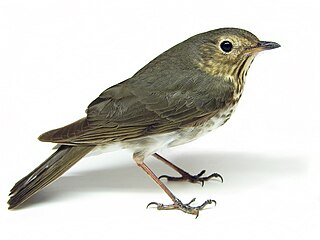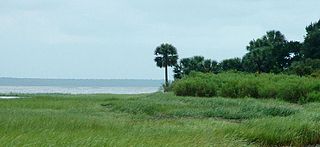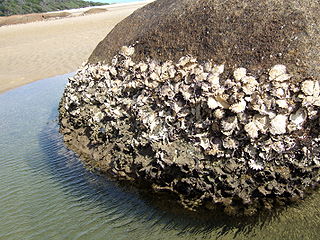
The Brassicales are an order of flowering plants, belonging to the eurosids II group of dicotyledons under the APG II system. One character common to many members of the order is the production of glucosinolate compounds. Most systems of classification have included this order, although sometimes under the name Capparales.

The Eurasian golden oriole, also called the common golden oriole, is the only member of the Old World oriole family of passerine birds breeding in Northern Hemisphere temperate regions. It is a summer migrant in Europe and Palearctic and spends the winter season in central and southern Africa.

Starlings are small to medium-sized passerine birds in the family Sturnidae. The Sturnidae are named for the genus Sturnus, which in turn comes from the Latin word for starling, sturnus. The family contains 128 species which are divided into 36 genera. Many Asian species, particularly the larger ones, are called mynas, and many African species are known as glossy starlings because of their iridescent plumage. Starlings are native to Europe, Asia, and Africa, as well as northern Australia and the islands of the tropical Pacific. Several European and Asian species have been introduced to these areas, as well as North America, Hawaii, and New Zealand, where they generally compete for habitats with native birds and are considered to be invasive species. The starling species familiar to most people in Europe and North America is the common starling, and throughout much of Asia and the Pacific, the common myna is indeed common.

Oryx is a genus consisting of four large antelope species called oryxes. Their pelage is pale with contrasting dark markings in the face and on the legs, and their long horns are almost straight. The exception is the scimitar oryx, which lacks dark markings on the legs, only has faint dark markings on the head, has an ochre neck, and has horns that are clearly decurved.

Glyphis is a genus in the family Carcharhinidae, commonly known as the river sharks. They live in rivers or coastal regions in and around south-east Asia and parts of Australia.

The hermit thrush is a medium-sized North American thrush. It is not very closely related to the other North American migrant species of Catharus, but rather to the Mexican russet nightingale-thrush. The specific name guttatus is Latin for "spotted", though historically this species has been given 17 additional species or subspecies names by various authors, now all treated as synonyms.

Swainson's thrush, also called olive-backed thrush and russet-backed thrush, is a medium-sized thrush. It is a member of genus Catharus and is typical of it in terms of its subdued coloration and beautiful, ascending flute-like voice. Swainson's thrush was named after William Swainson, an English ornithologist.

Wikispecies is a wiki-based online project supported by the Wikimedia Foundation. Its aim is to create a comprehensive open content catalogue of all species; the project is directed at scientists, rather than at the general public. Jimmy Wales stated that editors are not required to fax in their degrees, but that submissions will have to pass muster with a technical audience. Wikispecies is available under the GNU Free Documentation License and CC BY-SA 3.0.

The Siberian roe deer, eastern roe deer, or Asian roe deer, is a species of roe deer found in northeastern Asia. In addition to Siberia and Mongolia, it is found in Kazakhstan, the Tian Shan Mountains of Kyrgyzstan, eastern Tibet, the Korean Peninsula, and northern China.

The common duiker, also known as the gray duiker or bush duiker, is a small antelope and the only member of the genus Sylvicapra. This species is found everywhere in Africa south of the Sahara, excluding the Horn of Africa and the rainforests of the central and western parts of the continent. Generally, they are found in habitats with sufficient vegetation cover to allow them to hide—savannah and hilly areas, including the fringes of human settlements.

St. Marks National Wildlife Refuge, in Wakulla County, Florida, is one of the oldest wildlife refuges in the United States. Established in 1931 as a wintering ground for migratory birds, it encompasses more than 83,000 acres spread between Wakulla, Jefferson, and Taylor Counties in the state of Florida.

Saccostrea glomerata is an oyster species belonging to the family Ostreidae.

The yellow-throated marten is a marten species native to the Himalayas, Southeast and East Asia. Its coat is bright yellow-golden, and its head and back are distinctly darker, blending together black, white, golden-yellow and brown. It is the second-largest marten in the Old World, after the Nilgiri marten, with its tail making up more than half its body length.

Gaussia is a genus in the palm family, native to Mexico, Central America and the Greater Antilles. They are solitary, unarmed, and have pinnately compound leaves. The trees have enlarged bases and prop-roots.

The semiplumbeous hawk is a species of bird of prey in the family Accipitridae. It is found in Colombia, Costa Rica, Ecuador, Honduras, and Panama. Its natural habitat is subtropical or tropical moist lowland forests.

The bull-headed shrike is a passerine bird of eastern Asia belonging to the shrike family Laniidae.

The Sheepscot River is a 66-mile-long (106 km) river in the U.S. state of Maine. Its lower portion is a complex island estuary with connections to the Kennebec River downstream of Merrymeeting Bay.

The St. Marks Green Belt, in Seattle, Washington, borders East Blaine Street to the west, 10th Ave East to the east. The northern and southern borders are vague at best mixed with trees and houses. The greenbelt helps buffer the noise from I-5 from Capitol Hill. A trail entrance at the Lefler House parking lot leads through the green belt looping back to the other end of the parking lot. A small creek runs through the center of the western portion of the greenbelt weaving through corrugated pipes above and underground.
The Whipple Mountains Wilderness is a 76,122-acre (30,805 ha) wilderness administered by the Bureau of Land Management (BLM). Most of the Whipple Mountains are within the wilderness area. It is located in the northeastern Colorado Desert near the Colorado River. Lake Havasu and Lake Havasu City are 25 miles (40 km) to the North. Earp, California and Parker, Arizona are 20 miles (32 km) to the South. The Parker Dam is 8 miles (13 km) due east.
The iSimangaliso Marine Protected Area is a coastal and offshore marine protected area in KwaZulu-Natal from the South Africa-Mozambique border in the north to Cape St Lucia lighthouse in the south.

















